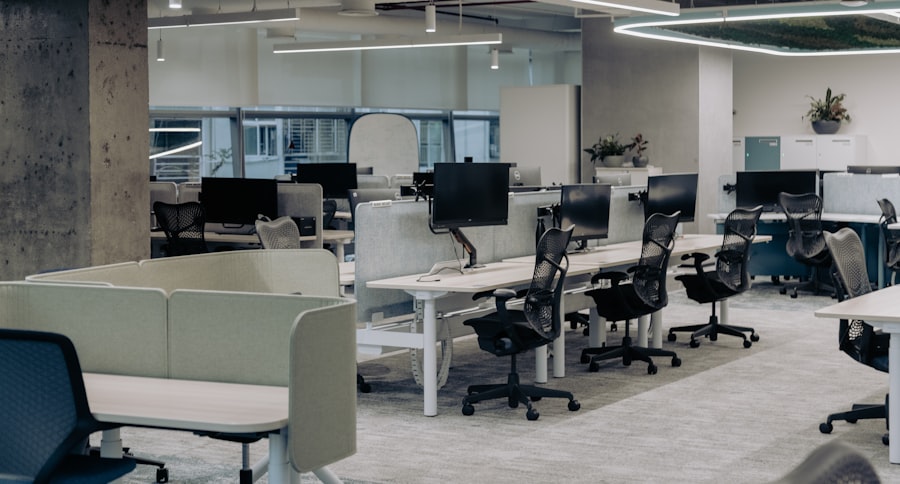Creativity is a vital component of organizational success, driving innovation, problem-solving, and the development of new ideas and products. In today’s competitive business landscape, creativity is increasingly important, enabling companies to stay ahead, adapt to change, and find innovative solutions to complex challenges. It also contributes significantly to employee satisfaction and engagement, as encouraging creative thinking and idea expression makes employees feel valued and motivated, leading to increased productivity and job satisfaction.
Moreover, creativity fosters a positive work culture where individuals feel empowered to take risks, think innovatively, and contribute to the organization’s overall success. Creativity is also crucial for problem-solving and innovation in a rapidly changing world. Businesses need to adapt quickly and find new ways to meet customer needs.
Creative thinking allows organizations to develop innovative products and services that differentiate them from competitors. It also enables them to discover new methods to streamline processes, improve efficiency, and drive growth. Without creativity, companies risk stagnation and falling behind in their industry.
Therefore, it is essential for organizations to recognize the importance of creativity in the workplace and actively cultivate an environment that encourages and supports it.
Key Takeaways
- Creativity in the workplace leads to innovation and problem-solving.
- A supportive environment for creativity includes flexible workspaces and schedules.
- Open communication and collaboration are essential for fostering creativity.
- Providing opportunities for skill development and growth encourages creativity.
- Embracing a culture of experimentation and risk-taking can lead to breakthrough ideas.
Creating a Supportive Environment for Creativity
Fostering a Culture of Open-Mindedness
A culture of open-mindedness and acceptance of new ideas is essential for fostering innovation and driving success in the workplace. When employees feel that their ideas are valued and respected, they are more likely to feel motivated to contribute their creative thoughts and suggestions.
Designing a Physical Environment Conducive to Creativity
Providing a physical environment that is conducive to creativity can also make a significant difference. This can include flexible workspaces, comfortable meeting areas, and access to tools and resources that support creative thinking.
Leadership’s Role in Fostering Creativity
Leadership plays a crucial role in creating a supportive environment for creativity. Managers and executives should lead by example by demonstrating their own openness to new ideas and willingness to take risks. They should also encourage a culture of experimentation and provide employees with the autonomy to explore new concepts and approaches. Fostering a culture of trust and psychological safety is essential for supporting creativity. When employees feel safe to express their thoughts and take risks without fear of judgment or repercussion, they are more likely to unleash their creative potential.
Encouraging Open Communication and Collaboration

Open communication and collaboration are essential components of a creative workplace. When employees are encouraged to share their thoughts and ideas openly, it fosters a culture of transparency and trust. This open exchange of ideas can lead to new insights, perspectives, and innovative solutions to complex problems.
Additionally, collaboration allows individuals with diverse skills and backgrounds to come together to work towards a common goal. This diversity of thought can lead to more comprehensive and creative solutions than those that could be achieved by individuals working in isolation. To encourage open communication and collaboration, organizations can implement strategies such as regular team meetings, brainstorming sessions, and cross-functional projects.
These activities provide opportunities for employees to share their ideas, receive feedback, and work together towards common objectives. Additionally, technology can play a significant role in facilitating communication and collaboration in the workplace. Tools such as instant messaging platforms, project management software, and video conferencing can help employees stay connected and work together regardless of their physical location.
Overall, open communication and collaboration are essential for fostering creativity in the workplace by creating an environment where diverse perspectives are valued, and innovative ideas can flourish.
Providing Opportunities for Skill Development and Growth
Providing opportunities for skill development and growth is crucial for fostering creativity in the workplace. When employees have access to training and development programs, they are better equipped to expand their knowledge, learn new skills, and explore different ways of thinking. This not only benefits the individual employee but also contributes to the overall creative capacity of the organization.
By investing in employee development, organizations can cultivate a workforce that is adaptable, knowledgeable, and capable of generating innovative ideas. One way to provide opportunities for skill development is through formal training programs that focus on creativity, innovation, and problem-solving. These programs can help employees develop the skills they need to think critically, generate new ideas, and overcome challenges.
Additionally, organizations can offer opportunities for mentorship and coaching, where experienced employees can share their knowledge and insights with others. This can help less experienced employees develop their creative thinking abilities and learn from the experiences of others. Furthermore, providing opportunities for growth through challenging assignments, cross-functional projects, and leadership opportunities can also help employees expand their skills and develop their creative potential.
Overall, investing in skill development and growth is essential for fostering creativity in the workplace by empowering employees to expand their capabilities and contribute innovative ideas.
Embracing a Culture of Experimentation and Risk-Taking
Embracing a culture of experimentation and risk-taking is essential for fostering creativity in the workplace. When employees feel empowered to take risks and explore new ideas without fear of failure or retribution, it creates an environment where innovation can thrive. This culture encourages individuals to think outside the box, challenge the status quo, and pursue unconventional solutions to complex problems.
It also allows for learning from mistakes and failures, which can lead to valuable insights and new opportunities for growth. One way to embrace a culture of experimentation is by encouraging employees to test new ideas through pilot projects or small-scale experiments. This allows individuals to explore new concepts in a low-risk environment and gather data on their potential impact.
Additionally, organizations can create processes that support experimentation by providing resources, time, and support for employees to pursue new ideas. This can include dedicated innovation teams, funding for research and development projects, or incentives for successful experimentation. Furthermore, leadership plays a crucial role in fostering a culture of risk-taking by setting an example through their own willingness to take calculated risks and support others in doing the same.
Overall, embracing a culture of experimentation and risk-taking is essential for fostering creativity in the workplace by creating an environment where individuals feel empowered to explore new ideas, challenge assumptions, and pursue innovative solutions.
Recognizing and Rewarding Creative Contributions

Regular Feedback and Praise
Regardless of the form it takes, recognition sends a powerful message that creativity is valued within the organization. One way to recognize creative contributions is through regular feedback and praise from managers and colleagues. This can help individuals feel appreciated for their efforts and encourage them to continue thinking creatively.
Formal Recognition Programs
Additionally, organizations can establish formal recognition programs that highlight outstanding contributions to innovation or problem-solving. These programs can include awards ceremonies or public acknowledgments that celebrate the achievements of individuals or teams who have made significant creative contributions.
Tangible Rewards
Furthermore, providing tangible rewards for creative contributions can also be an effective way to reinforce the value of creativity within the organization. This can include bonuses or incentives for successful innovation projects or patents resulting from employee ideas. Overall, recognizing and rewarding creative contributions is essential for fostering a culture of creativity in the workplace by demonstrating the value placed on innovative thinking and problem-solving.
Fostering a Culture of Diversity and Inclusion
Fostering a culture of diversity and inclusion is essential for fostering creativity in the workplace. When individuals from diverse backgrounds come together to work towards common goals, it creates an environment where different perspectives are valued, and innovative ideas can flourish. Diversity brings together individuals with unique experiences, skills, and ways of thinking that can lead to more comprehensive solutions to complex problems.
One way to foster a culture of diversity is by actively recruiting individuals from different backgrounds and experiences. This can include hiring individuals from different ethnicities, genders, ages, or educational backgrounds. Additionally, organizations can create programs that support diversity and inclusion by providing resources for underrepresented groups or offering training on unconscious bias.
Furthermore, creating an inclusive environment where all individuals feel valued and respected is essential for fostering creativity in the workplace. This can include promoting open communication, providing opportunities for all individuals to contribute their ideas, and addressing any biases or discrimination that may exist within the organization. Overall, fostering a culture of diversity and inclusion is essential for fostering creativity in the workplace by creating an environment where individuals from all backgrounds feel empowered to contribute their unique perspectives and innovative ideas.
In conclusion, fostering creativity in the workplace is essential for driving innovation, problem-solving, and success within organizations. By understanding the importance of creativity in the workplace and actively creating an environment that supports it through open communication, collaboration, skill development opportunities, risk-taking culture recognition of creative contributions diversity inclusion organizations can cultivate a workforce that is capable of generating innovative ideas driving growth in today’s competitive business environment.
If you’re interested in cultivating creativity in the workplace, you may also want to consider the role of lifelong learning in skill enhancement. This article from Careers Help discusses the importance of continuous learning and development for employees to stay competitive and innovative in their roles. It provides valuable insights into how organizations can support and encourage lifelong learning to foster a culture of creativity and growth.
FAQs
What is creativity in the workplace?
Creativity in the workplace refers to the ability of employees to generate new ideas, solve problems, and think innovatively to improve processes, products, or services within the organization.
Why is cultivating creativity important in the workplace?
Cultivating creativity in the workplace can lead to increased innovation, problem-solving, and productivity. It can also improve employee satisfaction, engagement, and retention.
How can creativity be cultivated in the workplace?
Creativity can be cultivated in the workplace through various methods such as providing a supportive and open-minded work environment, encouraging collaboration and diverse perspectives, allowing for autonomy and flexibility, and providing opportunities for learning and skill development.
What are some benefits of cultivating creativity in the workplace?
Some benefits of cultivating creativity in the workplace include improved problem-solving abilities, increased innovation, enhanced employee engagement and satisfaction, and a competitive edge in the market.
What are some challenges in cultivating creativity in the workplace?
Challenges in cultivating creativity in the workplace may include resistance to change, fear of failure, lack of resources or time, and a rigid organizational culture. Addressing these challenges may require leadership support, clear communication, and a willingness to experiment and take risks.



